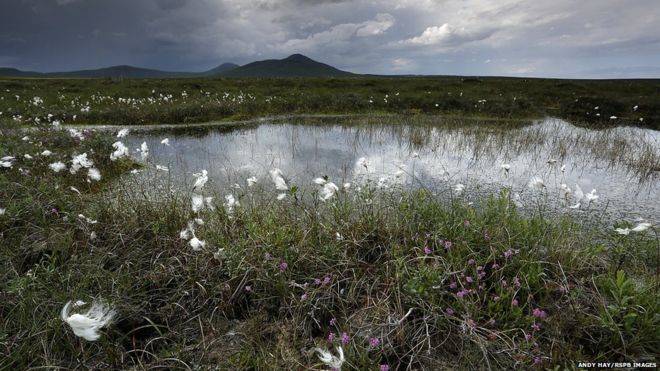Fund to help restore Scotland's peatlands launched by the Scottish government
Peat, also called turf, is made from partly decomposed plant material and forms in waterlogged conditions. Lack of oxygen means the plants do not rot completely and peat is unique to natural areas of peatlands and bogs. It takes thousands of years for peatlands to develop and there is an estimated 1.7 million hectares of peatland in Scotland. It's ecosystem is the most efficient carbon sink on earth and peatland plants capture the CO2 which is naturally released from the peat.
Scottish National Heritage have pointed out that in Scotland, soils such as peat store more than 3,000 megatonnes of carbon. This is seen as an asset for the environment with a megatonne being one million tonnes and is used to describe large amounts of CO2 emitted by power stations. Peat keeps carbon locked in the soil. Now an £8m fund to help protect and restore Scotland's peatlands has been launched by the Scottish government. The work undertaken will help reduce the country's greenhouse gas emissions by locking carbon into the environment.
In a report by BBC Scotland, Andrew McBride, a peatland specialist with Scottish Natural Heritage, said: "Scotland's peatlands actually hold the equivalent of about 140 years of our emissions from Scotland - all the industry. So it's very important that we hold the actual carbon and the peat in place. If it goes into the atmosphere, it's actually going to exacerbate climate change and that's why we're doing this, basically to cap it and keep it in place."
Restoring peatlands will also benefit wildlife and make the habitat better for grazing animals. The loss of vegetation on the top of healthy peatland results in the loss of species, invertebrates, bird species that use that vegetation. Creating an active, healthy peatland benefits all manner of biodiversity. A significant increase in peatland restoration forms part of Scotland's draft Climate Plan, and is currently going through the Scottish Parliament (Scottish Gaelic: Pàrlamaid na h-Alba) It aims to increase annual targets to 20,000 hectares, with 250,000 expected to be restored by 2032.






